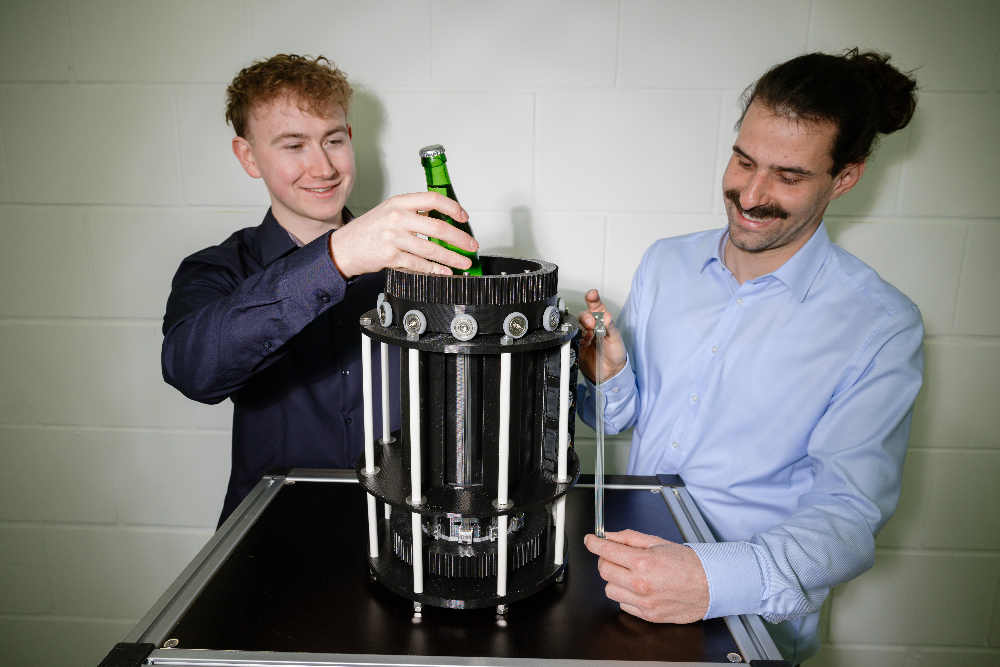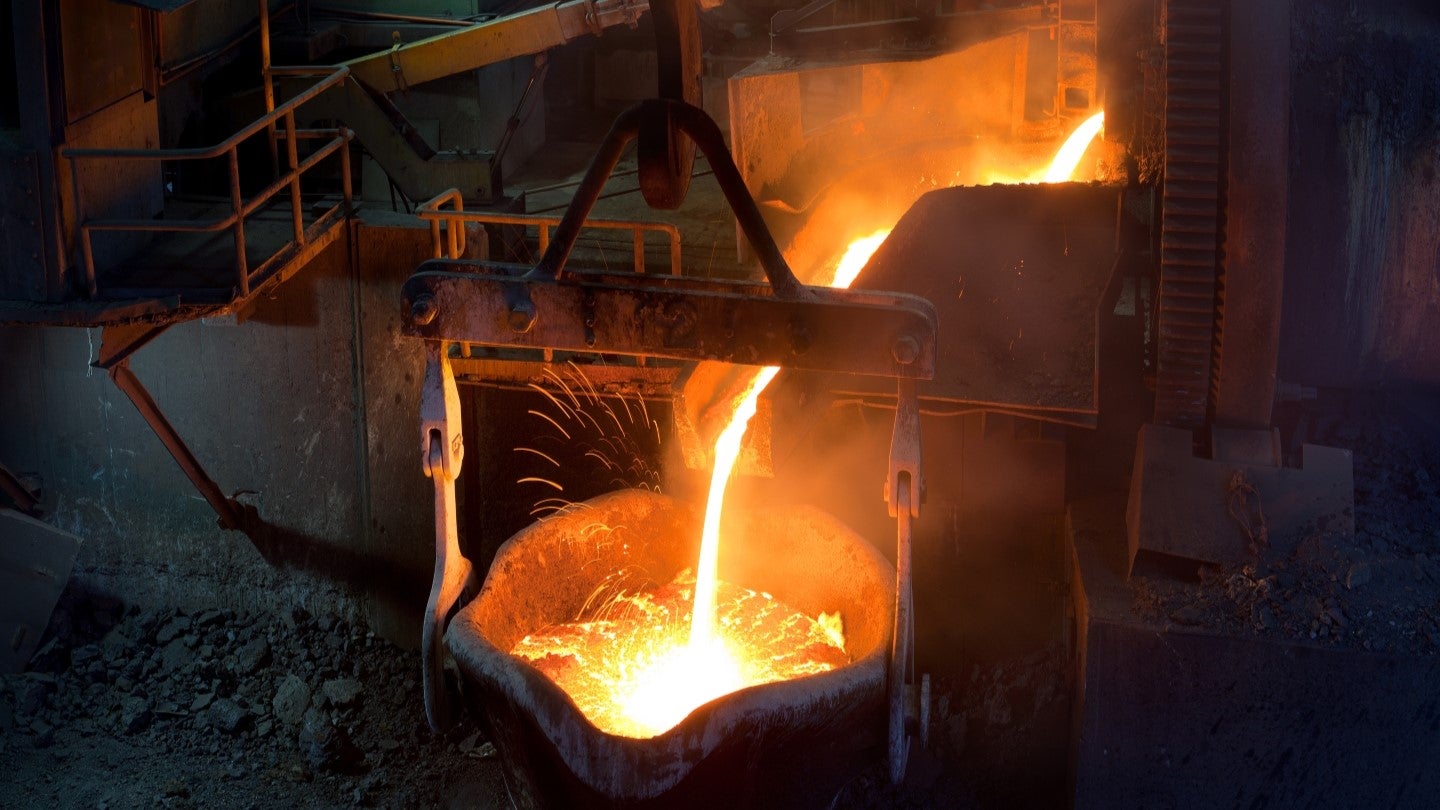Sign up for daily news updates from CleanTechnica on email. Or follow us on Google News!
At the last CleanTechnica staff meeting held under the pergola in the backyard of our posh intergalactic headquarters, Zachary Shahan, the grand, exalted poohbah of the CleanTechnica empire, asked, “Who can explain elastocaloric heating and cooling?” His gaze went around the room, but every one of our ace reporters had that “deer in the headlights” look in their eyes. No one spoke, so Zachary passed out a printout of the latest news from the University of Saarland in Germany. Here’s what we learned.
This new technology is based on a simple principle. Heat can be removed from a space by stretching wires and releasing them again. Known as ‘artificial muscles’, shape-memory wires made of super-elastic nitinol absorb heat in the cooling chamber and release it to the outer environment.
“Our elastocaloric process enables us to achieve temperature differences of around 20 degrees Celsius without using climate damaging refrigerants in a far more energy efficient manner than today’s conventional technologies,’ explains Professor Stefan Seelecke, who conducts research at Saarland University and at the Saarbrücken Center for Mechatronics and Automation Technology (ZeMa).
Did your high school guidance councilor tell you there were promising careers in mechatronics? No? Neither did mine, but apparently there is such a thing. Who knew?
Elastocaloric Efficiency
The efficiency of elastocaloric materials is more than ten times greater than that of current air conditioning systems or refrigerators. The US Department of Energy and the EU Commission have declared the cooling technology developed in Saarbrücken to be the most promising alternative to the existing processes. It can extract heat from large spaces and supply heat to those spaces using superelastic wires.
Considering the skyrocketing demand for cooling because of hotter temperatures brought on by global heating and the amount of electricity that will be needed to satisfy that demand using conventional air conditioning equipment, the elastocaloric process may represent a highly promising solution for the future. We all know how long it takes for new technologies to move our to the laboratory and into large scale production. Still, this is potentially good news, even if we don’t really understand how it works. Wikipedia, however, has a very good description for us non-technical types, including the historical factoid that nitinol was first developed as a material for the nose cone of rockets.
To transport heat, the researchers use the special ‘superpower’ of the artificial muscles made of nitinol, which is a combination of nickel and titanium in approximately equal proportions. It is currently used mostly in medical procedures Wires made of this alloy remember their original shape and revert to it after they have been deformed or stretched. Like muscles flexing, they can become long and then short again, and are also able to tense and relax. The reason for this lies deep inside the nitinol, which has two crystal lattices — two phases that can transform into each other. Unlike water, whose phases are solid, liquid, and gas, the two phases of nitinol are both solid. During these phase transitions of the crystalline structure, the wires absorb heat and release it again.
“The shape-memory material releases heat when it is stretched in a super-elastic state and absorbs heat when it is released,” explains Professor Paul Motzki, who holds a cross-institutional professorship at Saarland University and ZeMa, where he heads the Smart Material Systems research group. The effect is intensified when numerous wires are bundled together. Because of their larger surface area, they absorb and release more heat.

Easy In Theory, Difficult In Practice
Although the principle may at first seem very simple, the research questions that need to be addressed to construct a cooling circuit are highly complex. In the a proof of concept mini-fridge constructed by the research team, a specially designed and patented cam drive continuously rotates bundles of 200 micron-thin nitinol wires around a circular cooling chamber: ‘As they move in a circle, they are mechanically loaded on one side, that is to say they are stretched, and then unloaded on the other,’ explains PhD student Lukas Ehl, who is working on the cooling system.
Air is channeled past the rotating bundles into the cooling chamber, where the wires are unloaded and absorb heat from the air. The air then circulates continuously around unloaded wires in the cooling chamber. As they continue to rotate, the wires transport heat out of the cooling chamber and release it when stretched outside the cooling chamber. ‘The cooling chamber cools to around 10-12 degrees Celsius using this method,” says student Nicolas Scherer, who is conducting research in the project as part of his Master’s thesis.
The engineers in Saarbrücken are researching how the drive keeps the wires permanently in motion, what the air flows look like, in what way the processes are most efficient, how many wires they need to bundle, and how strongly they should ideally be stretched for a certain cooling level, among other areas of inquiry. They have also developed software that enables them to adjust the heating and cooling technology for different applications and to simulate and plan cooling systems. The research includes the entire cycle from material production and recycling through to production.
Refrigerators Are Just The Beginning
Refrigerators are just the start. “We want to leverage the innovative potential of elastocalorics in a wide range of applications, such as industrial cooling, electric vehicle cooling to advance e-mobility and also household appliances,” explains Paul Motzki.
The new technology is the result of over a decade of research that has been funded by several million euros from the EU and the German Research Foundation, among others. The Federal Ministry of Education and Research is investing more than €17 million in the DEPART!Saar project, in which the researchers are collaborating with other research institutions and industrial partners. The aim is to give rise to new technology transfer formats and accelerate the path to the market. In several research projects and doctoral dissertation projects, the engineers have also developed a cooling and heating demonstrator that runs continuously and shows how elastocalorics can cool and heat air.
The research team led by Stefan Seelecke and Paul Motzki uses shape memory technology for a wide range of applications, from innovative cooling and heating systems to robot grippers, valves, and pumps. The technology continues to be developed by PhD students who are conducting research as part of their doctoral dissertation projects as well as by students.
Elastocaloric Research At University Of Maryland
The University of Saarland is not the only place where elastocoloric research is taking place. Dr. Ichiro Takeuchi, a materials scientist at the University of Maryland, and his research lab, are also experimenting with the technology. In a blog post, Harvard University reports that elastocaloric materials respond to mechanical force, such as stretching or compressing, and absorb heat after the mechanical strain is released. These materials are non-volatile, meaning they do not easily evaporate into a gas. Therefore, their potential to contribute to global warming during operation is zero, which makes them a very attractive alternative to conventional refrigeration.
Originally, air conditioners used liquid refrigerants such as chlorofluorocarbons and hydrochlorofluorocarbons, which depleted the earth’s ozone layer. They were replaced by hydrofluorocarbons in the 1990s. Although HFCs do not damage the ozone layer, they are potent greenhouse gases that are hundreds of times more powerful than carbon dioxide. Elastocaloric devices could finally free humans from having to choose between cooling and degrading the environment.
The Takeaway
By harnessing the unique properties of the nitinol shape memory alloy, elastocaloric devices offer unprecedented efficiency in environmentally friendly cooling applications. The commercialization of this technology could transform industries reliant on cooling, from food preservation to climate control in buildings, and reduce energy consumption on a global scale. Beyond reducing greenhouse gas emissions and mitigating climate change, the widespread adoption of elastocaloric cooling devices could lead to energy savings, improved air quality, and enhanced resilience to climate related challenges, Harvard says.
Will the manufacturers of HFCs now band together like the fossil fuel industry to spread disinformation about elastocaloric devices? Probably. That is now the default play for any commercial sector that is facing a reduction in demand for its products by new technologies. In addition, significant progress toward addressing a warming climate often depends on countering the increasingly desperate attempts by entrenched industries to protect their market position by all means fair or foul. When someone devises a way to defuse those distortions, there might be a slim chance of humans surviving the climate catastrophe they have caused.
Have a tip for CleanTechnica? Want to advertise? Want to suggest a guest for our CleanTech Talk podcast? Contact us here.
Latest CleanTechnica.TV Videos
CleanTechnica uses affiliate links. See our policy here.
CleanTechnica’s Comment Policy





